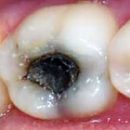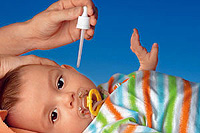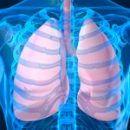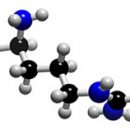Angina, or tonsillitis, - infectious inflammatory disease of the sky almonds. Learn all about the symptoms and treatment of angina.
Content
- What is angina?
- Causes of Angina
- Classification of tonsillitis
- Angina: Symptoms of acute inflammation of almonds
- Diagnosis of Angina
- Treating angina, or acute tonsillitis
Angina sick every person. This is the most common cold illness. Most people consider tonsillitis the most harmless sore. Is it so?
What is angina?
 The human immune system protects the body from pathogenic microorganisms. It consists of a number of immunocompetent cells and organs. Lymphoid fabric containing immune cells forms clusters — Almonds. Sky and sizzle almonds — The first line of defense of the body against infections.
The human immune system protects the body from pathogenic microorganisms. It consists of a number of immunocompetent cells and organs. Lymphoid fabric containing immune cells forms clusters — Almonds. Sky and sizzle almonds — The first line of defense of the body against infections.
Angina, or acute tonsillitis (from Lat. Tonsilla — «amygdala»), — Inflammation of the sky almonds arising due to the infection of the upper respiratory tract. Normally, these glands intercept pathogenic microorganisms, not giving them to spread through the body. To some extent angina — Useful phenomenon. But it does not always happen.
Causes of Angina
Tonnsillitis can cause a large group of bacteria, fungi and viruses. Healthy almonds transmit information about infection to other immune cells responsible for the production of antibodies. The source of infection caused by Streptococcus Group A becomes the cause of rheumatism.
Classification of tonsillitis
one. Acute tonsillitis, or angina:
- catarrhal;
- lacunary form;
- Follicular shape;
- fibrinous;
- phlegmonous.
2. Chronic tonsillitis:
- compensated form;
- Decompensated form.
Angina: Symptoms of acute inflammation of almonds
With the sore throat complains of:
- throat pain, increasing when swallowing;
- increase temperature, sometimes to significant numbers;
- cough;
- pain in muscles, joints, headaches;
- weakness, malaise;
- increased lymph nodes in the neck;
- Voting change.
With visual inspection of the almonds and the soft heaven of edema, red. On the mucous membranes (lacunar angina) or in the lobule — Pump (Follicular Angry), fibrinous fall. Purulent angina testifies to weak immunity.
In healthy persons, the disease passes within a few days without treatment or with such. In weakened patients, the disease occurs heavier. Possible complications — acute middle otitis, inflammation of the apparent sinuses of the nose, tonsilogenic sepsis, phlegmons or abscesses of surrounding tissues, neck.
Angina in children
In early childhood, the disease often leaks with high temperatures, chills, cough, intoxication. In severe cases, inflammation goes down below, leading to the edema of the mucous chip and larynx. Possible attacks of acute suffocation, lack of air. Condition requires immediate medical care.
Diagnosis of Angina
Angina's diagnosis does not represent complexity, especially for a otolaryngologist. Bacteriological examination of the pathogenic flora allows you to establish the pathogen, determine the sensitivity to antibiotics. To do this, the smear from the zea with sowing material is taken to the nutrient media.
Heavy protracted alarg may be a sign of a serious illness: AIDS, leukemia, etc.
Treating angina, or acute tonsillitis
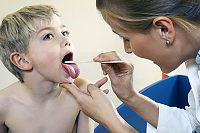 With angina, treatment tactics are chosen based on the patient's condition. If the disease is caused by viral infection — Antibiotics are not appointed. If the disease proceeds with minimal symptoms without pronounced intoxication and high temperature, these preparations also do not need.
With angina, treatment tactics are chosen based on the patient's condition. If the disease is caused by viral infection — Antibiotics are not appointed. If the disease proceeds with minimal symptoms without pronounced intoxication and high temperature, these preparations also do not need.
Antibiotics with Angina appoints a doctor. Basically, the means of penicillin and cephalosporinic row are used. In severe cases, preferably the purpose of antibacterial drugs in the injection form.
It is advisable to treat an angina in children and adults with bacteriological analysis. In this case, the effectiveness of therapy above. Do not interrupt the course after improving. The rational use of antibiotics prescribes to take the drug at least 5-6 days.
Necessarily local application of antiseptics. Immunostimulants are prescribed in heavy and protracted cases. Anti-inflammatory drugs are used to relieve symptoms.
Treat an angina need. Without adequate therapy, the disease goes into a chronic form. Chronic tonsillitis — Serious disease. It is a factor of many aids — from rheumatism to pathologies of pregnancy. With this form of almonds, they cease to perform a protective function and become a source of chronic intoxication and a focus of infection.

